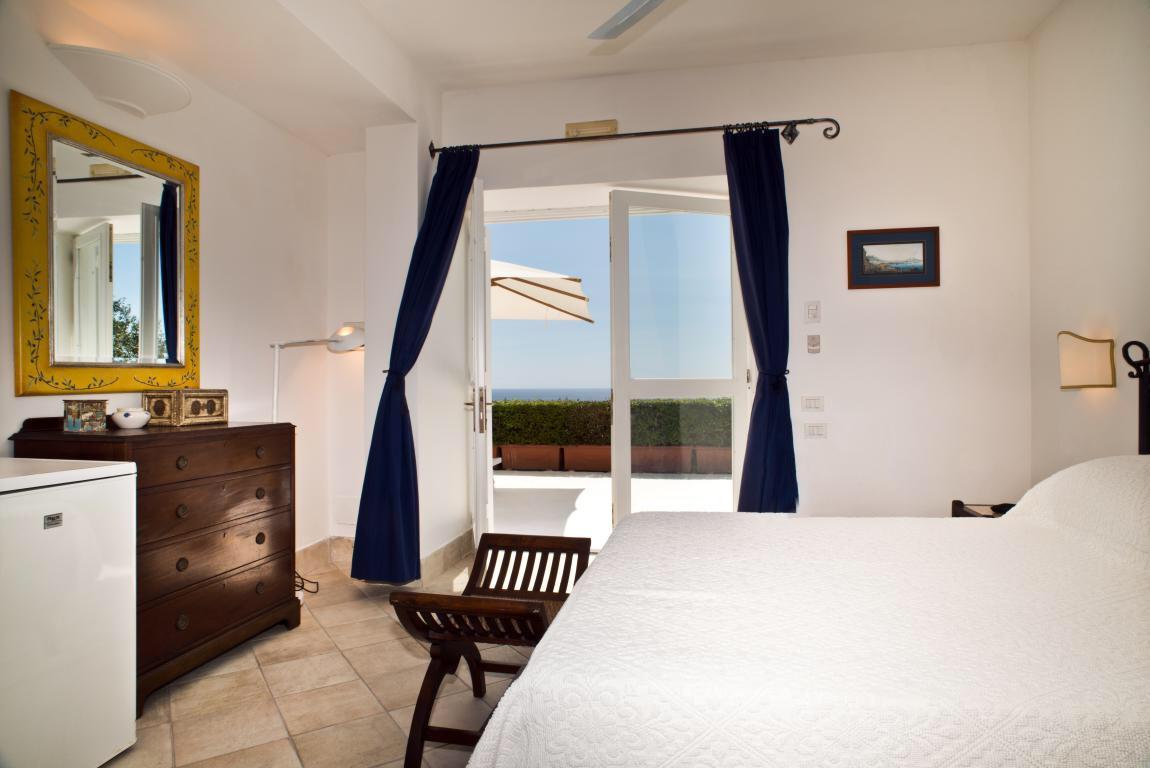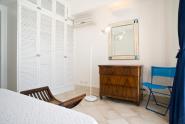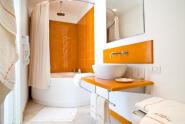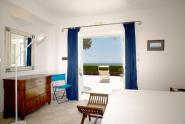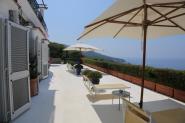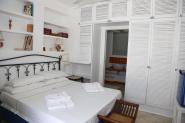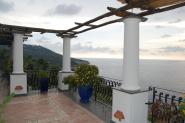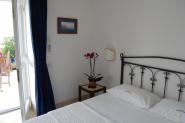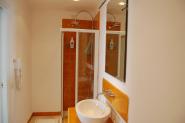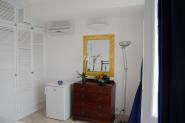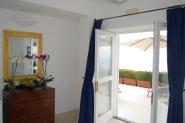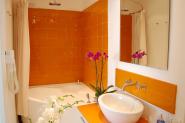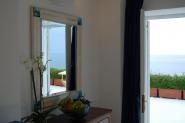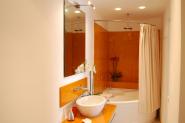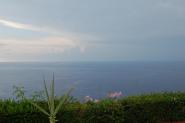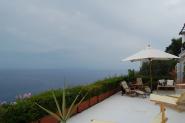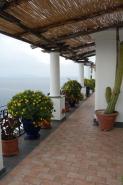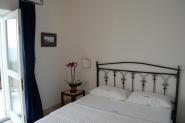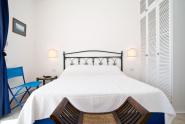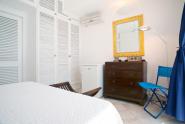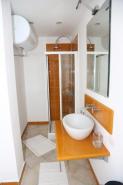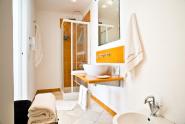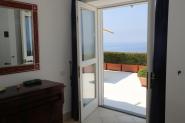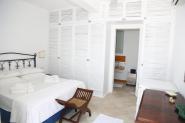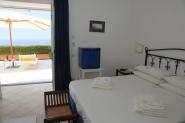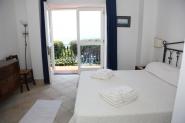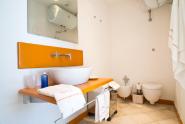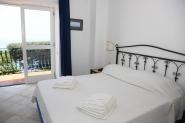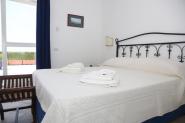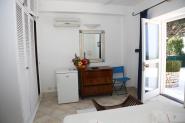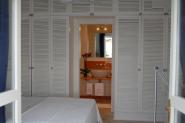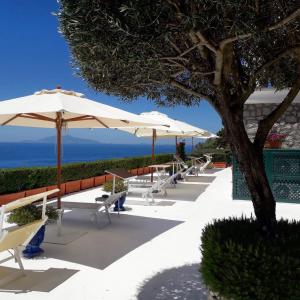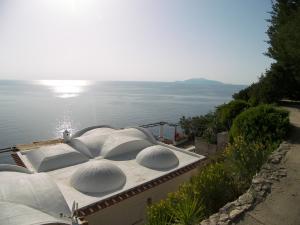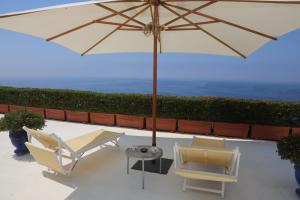Capri
-
Sea View Camera (Max 2 Pax)
Double, Capri, Sea View



 € 675 per night
€ 675 per night
Capri
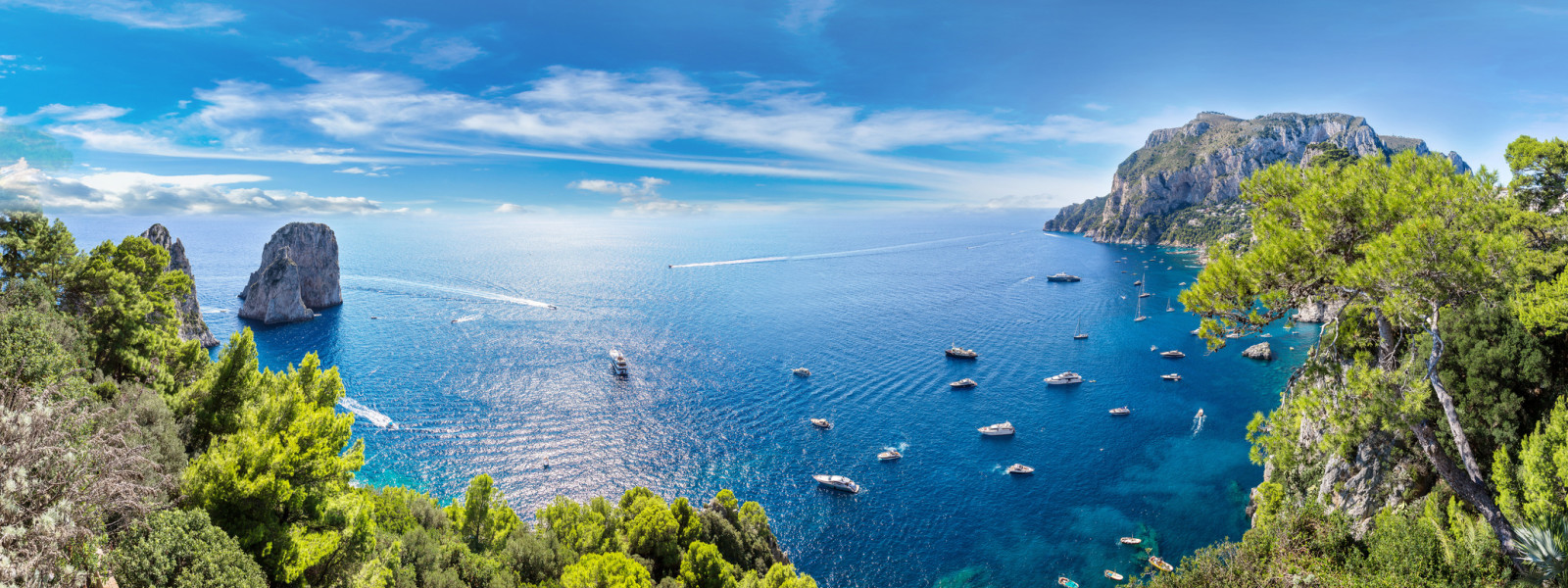
Pearl of the Mediterranean, Capri is an island of karst origin belonging to the Sorrento peninsula.
It is located in the southern part of the Gulf of Naples and is formed by two plateaus, separated by a fertile plain. A certainly suggestive territory, where the beauty of the landscapes and the numerous natural attractions represent the greatest pride of the Campania locality.
The irregular and jagged coasts welcome cliffs, caves and coves of indescribable beauty. And then breathtaking views, beaches set among the rocks, colorful streets and the scent of flowers, but today Capri is also the place for nightlife, shopping and VIPs.
Its history is linked to that of the Mediterranean and to the populations that have crossed it. The origin of the name is uncertain: some say it derives from the ancient Greek Kapros (wild boar), others from the Latin Capraeae (goats).
The first admirer of Capri was the Roman Emperor Augustus, who in 29 BC dissolved it from the dependencies of Naples and began his private domain. The Emperor Tiberius then chose it as a retreat from the political life of Rome and had 12 villas built, including Villa Jovis in Capri and Villa Damecuta in Anacapri.
The island was subdued by the Normans, the Swabians and the French, then passed to the Bourbons in 1815. In the second half of the nineteenth century the romantic artists who visited the small island in the Gulf of Naples were fascinated by its pure nature, by the sheer views on the sea and the simplicity with which the few inhabitants led their lives. Capri was also included as a fundamental stage of the Grand Tour, the journey of the young aristocrats of the time in European countries.
Many the most illustrious names who were attracted by the beauty of the place: the Chilean poet Pablo Neruda and the writer Isabel Allende, the writers Oscar Wilde and Graham
Pearl of the Mediterranean, Capri is an island of karst origin belonging to the Sorrento peninsula.
It is located in the southern part of the Gulf of Naples and is formed by two plateaus, separated by a fertile plain. A certainly suggestive territory, where the beauty of the landscapes and the numerous natural attractions represent the greatest pride of the Campania locality.
The irregular and jagged coasts welcome cliffs, caves and coves of indescribable beauty. And then breathtaking views, beaches set among the rocks, colorful streets and the scent of flowers, but today Capri is also the place for nightlife, shopping and VIPs.
Its history is linked to that of the Mediterranean and to the populations that have crossed it. The origin of the name is uncertain: some say it derives from the ancient Greek Kapros (wild boar), others from the Latin Capraeae (goats).
The first admirer of Capri was the Roman Emperor Augustus, who in 29 BC dissolved it from the dependencies of Naples and began his private domain. The Emperor Tiberius then chose it as a retreat from the political life of Rome and had 12 villas built, including Villa Jovis in Capri and Villa Damecuta in Anacapri.
The island was subdued by the Normans, the Swabians and the French, then passed to the Bourbons in 1815. In the second half of the nineteenth century the romantic artists who visited the small island in the Gulf of Naples were fascinated by its pure nature, by the sheer views on the sea and the simplicity with which the few inhabitants led their lives. Capri was also included as a fundamental stage of the Grand Tour, the journey of the young aristocrats of the time in European countries.
Many the most illustrious names who were attracted by the beauty of the place: the Chilean poet Pablo Neruda and the writer Isabel Allende, the writers Oscar Wilde and Graham
What to see in Capri
The things you absolutely must see if you stay in Capri
Blue Cave

The name and its fame derive from the incredible blue color of the waters inside: the sea seems illuminated by a light that comes from the bottom and you can see many little fish swimming silver reflections. It is a natural cavity 60 meters long and 25 meters wide, the entrance is 2 meters wide and only 1 meters high. The famous Blue Grotto was already known in ancient times, when the emperor Tiberius had a passage built from his villa to the cave for swimming. Entry is only possible with small boats, you have to lie down to pass them, and it is forbidden to enter by swimming or diving. At the port of Marina Grande there are box offices that organize boat tours.
What to see in Capri
The things you absolutely must see if you stay in Capri
Blue Cave

The name and its fame derive from the incredible blue color of the waters inside: the sea seems illuminated by a light that comes from the bottom and you can see many little fish swimming silver reflections. It is a natural cavity 60 meters long and 25 meters wide, the entrance is 2 meters wide and only 1 meters high. The famous Blue Grotto was already known in ancient times, when the emperor Tiberius had a passage built from his villa to the cave for swimming. Entry is only possible with small boats, you have to lie down to pass them, and it is forbidden to enter by swimming or diving. At the port of Marina Grande there are box offices that organize boat tours.
Faraglioni

The famous rocks of Capri are rocky boulders that emerge from the water, a few meters from the coast. The name "Faraglioni" derives from the Greek Pharos and is due to the fact that large fires were lit here to signal the route to sailors. Oguno has a name: the first joined to the earth, is called Stella, the second separated from the first by a stretch of sea, Faraglione di Mezzo, and the third Faraglione di Fuori or Scopolo, that is head or promontory on the sea. On the latter lives the famous Blue Lizard of the Faraglioni, which is said to have these colors to blend in with the sea and the sky. The Faraglione di Mezzo is crossed by a natural cave that can be traveled by boat.
Gardens of Augustus

The Gardens of Augustus consist of a series of flowered terraces that on one side overlook the Faraglioni of Capri, on the other the Bay of Marina Piccola and the bends of Via Krupp. A photo from here, with the breathtaking view behind, is a must! Under the Gardens of Augustus there is Via Krupp, a splendid road built in the early 1900s and commissioned by the German industrialist Friedrich Alfred Krupp. It consists of many hairpin bends that seem to overlap each other. Unfortunately, due to the risk of landslides, it is often closed and therefore can only be admired from the Gardens of Augustus.
Belvedere Tragara

Immediately after via Camerelle, the shopping street begins via Tragara. Walking along it you will be accompanied by the scent and colors of the flowers, until you arrive at Belvedere Tragara. A large terrace, a magical place that offers one of the most beautiful views of Capri: the Faraglioni are so close that it almost seems to touch them! Below is the road, made up of 775 steps, which leads to the Arco Naturale and Pizzolungo.
Villa Jovis

Dedicated to Jupiter by the Roman Emperor Tiberius, Villa Jovis is one of the best preserved examples of Roman architecture in the Mediterranean. It is one of the most beautiful villas of ancient Rome and extends over 7 square kilometers. It was built in the 1st century BC. C. and the emperor spent 12 years there. From here the view is magnificent: it goes from Ischia to Procida and from the Gulf of Salerno to the Cilento coast. Its architectural features recall those of the classic villas of the Roman period, but also those of a small fortress. In the center there were once the cisterns for the collection of rainwater.
Via Camerelle

It is the street of shopping and big names. It starts next to the Grand Hotel Quisisana, near the famous square, and leads to via Tragara. Always full of tourists, it is also rich in history and crafts. Via Camerelle was built by the Romans and in ancient times it was known by another name, via Anticaglia. The current name derives from buildings that were probably cisterns that were used to collect water. The first jewelery shop and the first shop of handmade Capri sandals opened in via Camerelle.
Mount Solaro

It is the highest peak on the island, 589 meters above sea level. From here you can admire the two gulfs of Naples and Salerno. It can be easily reached by chairlift from Anacapri or on foot, along one of the paths, such as the one that starts from Villa San Michele. Mount Solaro is also called "Cloud catcher" because, especially at dawn, when the temperature difference between sea and rock is accentuated, a curtain of vapors is formed. The warmer, wetter sea air condenses into mist on the ground cooled by the night and is blown away by the wind. Where the road is blocked, the fog rises upwards and generates the characteristic crown of clouds. On Monte Solaro, the Hermitage of Santa Maria a Cetrella, in the past a place of spiritual retreat for the monks, and the remains of the Castle of Barbarossa, built around the eleventh century and stormed by the Turkish admiral Khair-ad- din in 1535, the fearsome Barbarossa in fact.
Villa and Museum of San Michele

Villa San Michele, in Anacapri, was the residence of Axel Munthe, doctor, writer, botanist and art collector of Swedish origin, who built it at the end of the 19th century on the site of an ancient Roman imperial villa. Rich in period furnishings and artwork, it has remained as he left it. The garden is a true splendor, scattered with rare and Mediterranean essences, marbles and ancient statues: it has been awarded as the most beautiful park in Italy. From the pergola boulevard, full of terraces and panoramic points, you arrive at a spectacular circular viewpoint overlooking the Gulf of Naples. Villa San Michele a house-museum that houses archaeological finds recovered by Munthe in Capri, Anacapri and elsewhere, sometimes donated by friends. It preserves fragments of sarcophagi, busts, Roman floors, marble and columns. In the garden there is a Greek tomb and a granite sphinx that dominates the whole island of Capri from the belvedere.
Mount Solaro

It is the highest peak on the island, 589 meters above sea level. From here you can admire the two gulfs of Naples and Salerno. It can be easily reached by chairlift from Anacapri or on foot, along one of the paths, such as the one that starts from Villa San Michele. Mount Solaro is also called "Cloud catcher" because, especially at dawn, when the temperature difference between sea and rock is accentuated, a curtain of vapors is formed. The warmer, wetter sea air condenses into mist on the ground cooled by the night and is blown away by the wind. Where the road is blocked, the fog rises upwards and generates the characteristic crown of clouds. On Monte Solaro, the Hermitage of Santa Maria a Cetrella, in the past a place of spiritual retreat for the monks, and the remains of the Castle of Barbarossa, built around the eleventh century and stormed by the Turkish admiral Khair-ad- din in 1535, the fearsome Barbarossa in fact.
Piazzetta of Capri

Piazza Umberto I, the worldly heart of Capri, is known as the "Piazzetta". Until the last century it housed the market stalls, while today it is the symbol of the island's social life. Bars, tables, tourists and famous people animate this square at all hours. A stop is a must for a coffee or an aperitif, to fully experience the Capri atmosphere. From here the main streets of the island open up.
Marina Grande and Marina Piccola
In Marina Grande is the only port of Capri where hydrofoils and ferries dock. Not far away is the public beach of Marina Grande, the largest on the island of Capri, a stony bay overlooking the blue of the sea. On the left is Piazza Vittoria and the Funicular station. On the opposite side of the island is Marina Piccola, small pebble coves. From here you can admire the Faraglioni in all their splendor.

